Are you wondering how to introduce a new activity to your child so he would be eager to try it out? Find important steps here to keep in mind while presenting a new activity to your kids that can spark their interest in it.
Don’t toddlers just love to explore anything and everything that comes along their way? They are like young masterminds who are always eager to explore and learn as much as they can about the world around them. When my daughter had reached the toddler milestone, I had found a big difference in the way she approached things around her. She would pick up a new toy, speak to them, create imaginary stories based on real-life situations around her, and often use things lying around the home to create new activities for herself.
In her daily routine, I always try to introduce at least 1-2 new activities in her schedule so that she can learn something new each day as well as something to keep her busy for long. From my past experience, I have realized that the way you introduce a new activity to your child, goes a long way in helping spark their interest in the activity as well it also helps them learn the activity sooner.
If the activity is presented in a messy way and the steps are not properly defined, you will notice your child will start to get bored too quickly. In this blog post, I will show you simple steps and tips to keep in mind while introducing a new activity to your child.
Related blog reads
10 Easy toddler activities for early learning
How to set up a successful toddler schedule
10 Benefits of reading to your child that you should know
How to get started with toy rotation + FREE printable toy rotation kit
Pin this post to keep it handy all the time

Guidelines on how to introduce a new activity to your child
How to show the child an activity
How you introduce i.e., show an activity to your child will define how easily they can adapt to it. Also, it helps sparks their interest in the activity and motivates them to try new things with it.
1. Presentation is key
The first and foremost step in introducing an activity to your child is presentation. I usually display all the objects needed for the activity in a large plastic box and present the activity to my daughter by breaking it into many small steps.
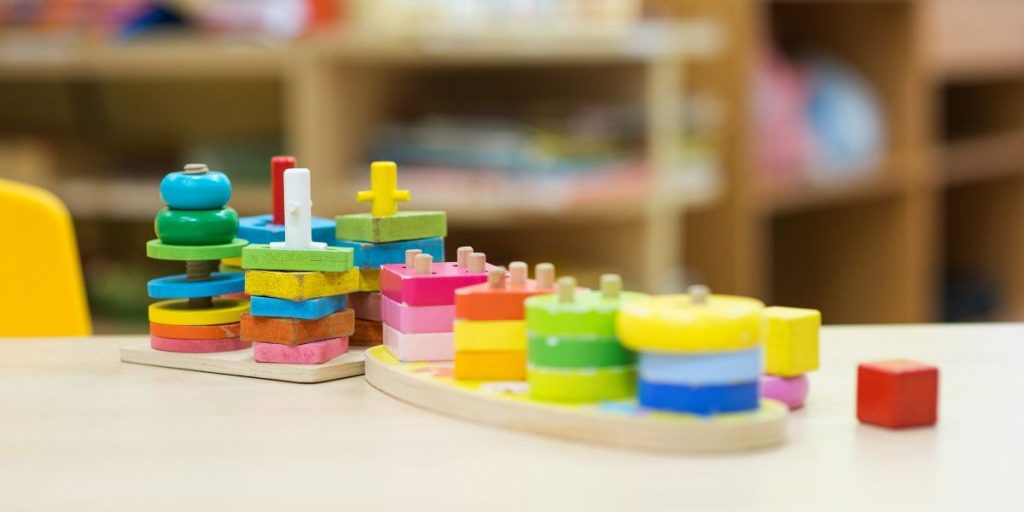
2. Make slow hand movements
Once you have the activity properly displayed on the table or the plastic box, the next step is to show the activity to your child. Make sure to follow slow and precise hand movements so that your child can observe it clearly.
Example – If your activity involves, opening a bottle lid, make sure to do that as slowly as possible so that your child can observe the steps clearly.
3. Repeat the processes using the same steps as before
Be patient! Your child will take his own time to get used to the activity. Try to show your child the same activity multiple times in the same steps used as before, so that it’s easier for your child to learn.
4. Hold the objects in the same way as the child will hold them
To make it easier for your child to learn the activity, try to hold the objects in the exact same way as your child might hold them. Children learn a lot from observation and often more quickly as well.
For example – If your child is used to holding a ball with two hands, then while showing him the steps to do the activity you should hold the ball with two hands as well.
5. Avoid talking only concentrate on actions
Lastly, it is important to avoid talking as much as possible while showing the activity to your child. You can talk to him while taking breaks in the activity but not while doing the steps.
Toddlers need time to process what they have learned and hence to not get them distracted, it is best to avoid talking so that they can concentrate on the activity going on.
How to set up an activity
It is very easy for toddlers to get attracted to what looks best to them. Hence when you introduce a new activity to your child, it is important to make it as attractive as possible so that it can peek their interests.
1. Set up the activity in an attractive way possible
You can either display the activity in a large plastic box or a tray. Displaying the objects that you need for the activity in an appealing way, will get your toddler more interested in it.
2. Display the activity to your child in a comfortable position
It is important to display the activity in a way to your child so that he can easily access it. You can show him the activity while he is sitting on the floor or you can also use a small toddler desk chair like this one to make sure that he is seated properly and able to do the activity comfortably.
3. Arrange everything properly so that the child can help themselves
To motivate independent play in your child, it is important to display everything that your child needs for the activity in an organized way.
For example – If your child is doing an activity that includes water, then make sure to have a washcloth on the side so that your child can use it when he needs it. Or if the activity includes crafts paper, then make sure to keep a few handy nearby so that your child can have access to it as per his need.
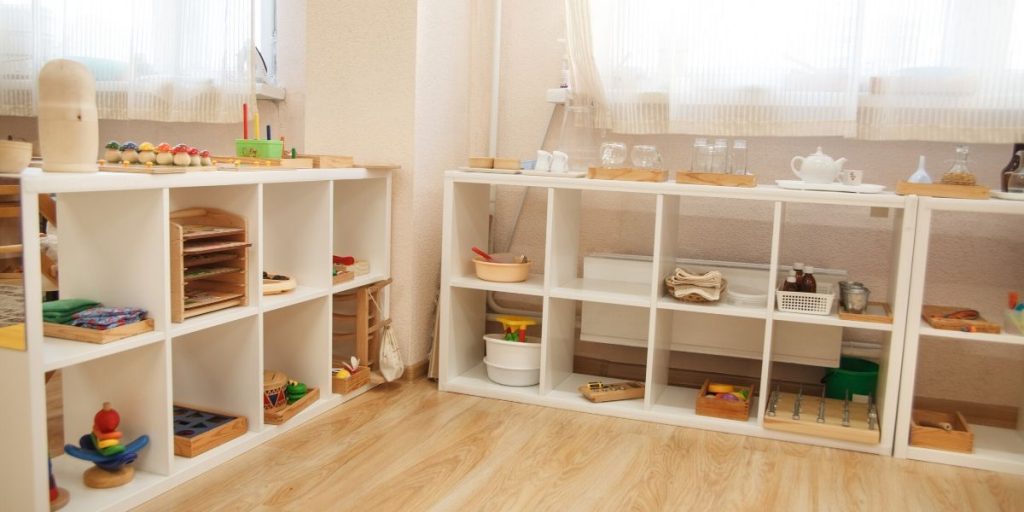
4. If you have multiple activities, then arrange the activity from the easiest to the hardest
Lastly, if you are introducing multiple activities to your child, then make sure to arrange the activities from the easiest to the hardest. So that they don’t feel demotivated if they are unable to do the hard activity.
Although for toddlers, it is best to introduce one activity at a time, as having multiple activities can be distracting for them and they would have the urge to move and explore the other activity without completing the first one.
Tips to keep in mind while introducing a new activity to a child
Now that you know how to set up an activity and show a new activity to a child. The below tips are just simple guidelines to keep in mind while you are doing a new activity with your child.
1. Follow your child’s pace and interests
Sometimes your child might not be that interested in the ongoing activity. That's perfectly normal. It is most important to follow your child’s pace and interest while doing the activity. Let them take the time to get used to the activity as well as ask them what kind of activities are they interested in. This can help you plan better!
2. Show the activity multiple times to your kids
Young children learn from exploring and observing things around them. So be ready to repeat the activity multiple times with the same steps as before, so that your child can adapt to the activity even more easily.
3. Let the child take as much time as he needs
Give your child as long as he needs to master the activity. You do not want to rush him, as that can break his concentration as well as excitement to do the new activity.
The whole point of doing a new activity is so that the child can learn as well as learn to concentrate and focus on a task. Pushing the child to learn the activity can break his enthusiasm and focus.
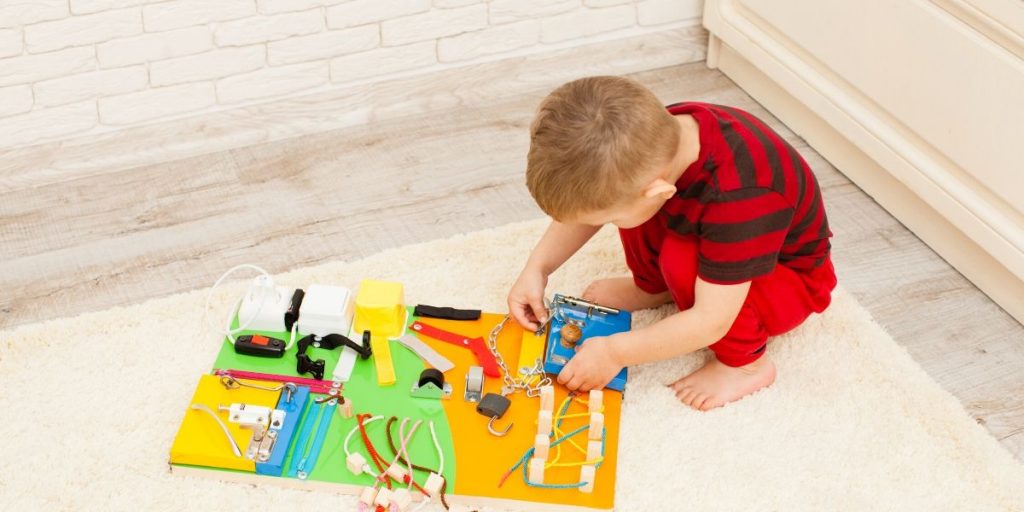
4. Modify the activity as per need
You will find that some steps might seem hard for your little one. When you encounter a situation like this, use your own judgment as to when to improvise the activity.
For example – If your child is finding it hard to uncork a bottle lid, then for the first few times you can do that step for him, but after a few times motivate your child to try to that step on his own.
It is important to make sure, that you do not push your child as it can take his confidence away and make him defer from learning the new activity.
5. Let the child explore and be creative with the activity
While doing the activity, it is all rite if your child wants to be creative and try a few new steps in the activity. Children learn from exploring and as a parent we should give them as much space as possible to be creative.
Sit back and let your child explore and get creative with his new activity. And if your child tries to mess up or use the things inappropriately then help him understand that what he is doing is wrong and the objects should not be handled in that way.
6. Clean up the activity once done
Once the activity is over, make sure to clean up the activity and disassemble the objects. An activity broken down into steps is more attractive to a young child. Hence after completing the activity once, make sure to disassemble and clean up the activity.
7. Avoid leaving the kid alone with small and sharp parts
Finally, if your activity involves small objects and scissors or knives, make sure to supervise the activity. It is important to make sure that your child is using the tools in the right way.
Young children love to try out new activities and they learn a lot from them. Hence it is important, to at least introduce 1-2 new activities daily in your child’s curriculum so that they get to explore and learn new things often.



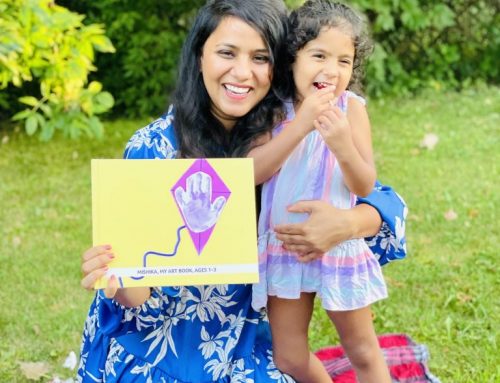






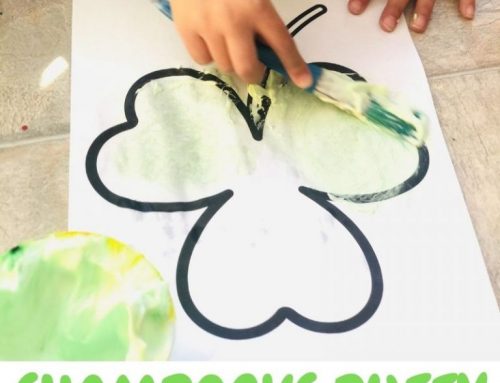

Leave A Comment